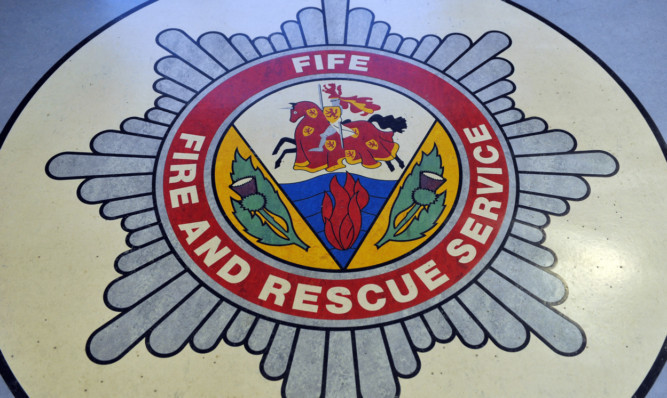Fife Fire and Rescue Service has almost enough staff to fully crew appliances but only if no-one goes off sick.
The service has managed to hit the 75% target for sending out a crew of five on the first appliance deployed to fires, followed by an appliance with a crew of four.
Last year, there were concerns about staff levels, after it was reported two appliances each staffed by four firefighters were being sent to incidents on nearly 28% of occasions, falling short of the target for crews of five and four set by the Scottish Central Fire Brigades Advisory Council.
Having taken on new recruits, the service has managed to deploy more firefighters and is sending out crews of five and four nearly 80% of the time. However, the Fire Brigades Union (FBU) in Fife said there was a lack of resilience to cope with staff absences.
The service’s area operations manager, David Somerville, said yesterday the service needed 288 frontline staff to fully crew appliances.
He said: “We hope to have, by the middle of March, 284, which is very close to what the overall establishment should be.
“Whenever we drop below 288, invariably it means that somewhere in the service we are running at four and four. That’s how tight our figures are.”
Chief fire officer Neil McFarlane said: “When everybody is at their work there are no ridership issues but, from a practical perspective, we can’t plan for short-term absences.”
He added that Fife had always occasionally deployed appliances with crews of four and four.
“We’ve never had 100% ridership,” he said.
The update on ridership levels was discussed by Fife’s fire and rescue transition committee at the service’s headquarters in Thornton.
Councillors heard the retirement of a brigade manager and middle manager had meant between two and four extra firefighters could be transferred to Fife from other Scottish services.
Fife Fire and Rescue Service also introduced a ring-fenced overtime budget to boost staffing levels.
Committee chairman Neil Crooks said: “This is a risk-based industry and if it is financially driven, the risk can go up.
“Financially driving the budget for an emergency service like this is fraught with danger and, I think, adds to the risk. I wouldn’t disagree that there are financial constraints but applying them to the emergency services is bizarre, to me.”
After the meeting, Fife FBU branch secretary Scott McCabe said: “Because that resilience is no longer there, short-term sickness is having a significant impact.
“But things are starting to bounce back into a direction we can be more confident about. I think we have moved closer to achieving a balance between the budget and community safety and firefighter safety and are closer to achieving that balance than we have been since the whole process started.
“I think it shows the dedication that firefighters and staff have in Fife and shows that people can get that balance right and keep people safe.”
The committee welcomed Scottish Fire and Rescue Service chairman Pat Watters and national chief fire officer Alasdair Hay to the meeting. Mr Watters and Mr Hay answered questions about the imminent move to a single Scottish service.
Mr McCabe said the single service could have benefits for Fife.
“Because Fife has had its budget cut quite significantly over the past four to five years, the outcome can only be favourable for people in Fife; and what was encouraging was the level of questioning coming from elected members.”
